The SilverStone Fortress FT05 Case Review
by E. Fylladitakis on June 5, 2015 8:00 AM EST- Posted in
- Cases/Cooling/PSUs
- SilverStone
- Case
Test setup
Professional testing requires the emulation of real-world situations but with repeatable results; thus, a perfectly controllable test setup and environment are required, especially for comparable results. Testing the thermal performance of any case with a typical real-world setup technically limits the comparability of the results to this setup alone, as an active system interacts with its environment and the change of a single component would alter myriads of variables.
As such, we developed synthetic loads that emulate the thermal output of real systems, which however are passive, steady and quantifiable. As a result, our thermal testing displays the thermal capabilities of the case alone, as if it would have to deal with the entire thermal load by itself, regardless of the system that would be installed inside it. Laboratory data loggers are being used to monitor the PT100 sensors and control the safety relays, which are fully accessible via our custom software. Three such loads have been developed; the ATX version simulates a 200W CPU, 50W VRM, 30W RAM and 4 × 120W GPU card thermal load. Finally, three 3.5" HDD dummy loads have also been created, with each of them converting 30 W of electrical power to thermal, bringing the total thermal load of the ATX test setup up to 850 Watts. As such, the thermal load is immense and only the best of cases will be able to handle it for more than a few minutes. Meanwhile we are also performing a test with a thermal load of 400W, with all of the aforementioned components except the HDD drives at about 42% power, which is more suitable for the majority of cases.
Thermal testing has been performed with all of the case's stock fan operating at maximum speed. Noise testing has been performed with a background noise level of 30.4dB(A). Advanced noise testing is also being performed, in order to assess the ability of the case to dampen the noise of the components installed inside it. This includes the installation of two noise-generating sources (strong fans) inside the case, one positioned approximately over the first expansion slot and one over the CPU area, which generate ≈ 44.2 dB(A) when unobstructed. During the advanced noise test, all stock cooling options of the case are entirely disabled.
Note: As the Fortress FT05 can only host two 3.5" devices, the maximum load of each test configuration is reduced by 30 Watts (minus one HDD dummy load).
Results and discussion
The thermal performance of the SilverStone Fortress FT05 is just a little worse than that of the Raven RV05. This was to be expected, as the sound dampening material on all panels acts as a thermal insulator as well, forcing nearly all of the heat transfer to take place via the airflow. Still, the thermal performance remains fantastic, rivaling that of much larger and fancier products. Even cases with double the volume of the Fortress FT05 are having a hard time competing. For example, the small and cramped Fortress FT05 can maintain about the same GPU temperatures as the massive Corsair 760T. However, this is solely because there are two massive 180mm intake fans supplying ample air directly over the system. If the airflow is blocked for any reason (e.g. messy cable job, dust on the filter, etc.), the thermal performance of the Fortress FT05 plummets.
With the Raven RV05, the 180mm stock cooling fans had the downside of being significantly loud at maximum speed. The same fans are present in the Fortress FT05 but the sound dampening material makes for a notable drop of the sound pressure levels, making the 180mm fans completely inaudible at low speeds. With a maximum of 37.3dB(A), the Penetrator fans are now fairly comfortable for everyday use even at their maximum speed. Considering the airflow of these fans, running them at half the speed will provide more than adequate airflow to a system with a typical CPU and a single GPU.
The sound dampening capabilities of the Fortress FT05 were better than we initially anticipated. As the top of the case is almost entirely perforated, one would expect the noise dampening capabilities to be very low. SilverStone pleasantly surprised us, with the Fortress FT05 reducing the noise of our dummy test source from 44.2dB(A) to 40.9dB(A). It may not seem as an astonishing figure at first but remember that the decibel scale is logarithmic and seemingly small changes can have great real world repercussions. It actually is very good, with a drop of the sound intensity by nearly 54% (2.63×10-8 to 1.23××10-8 Watts per square meter).


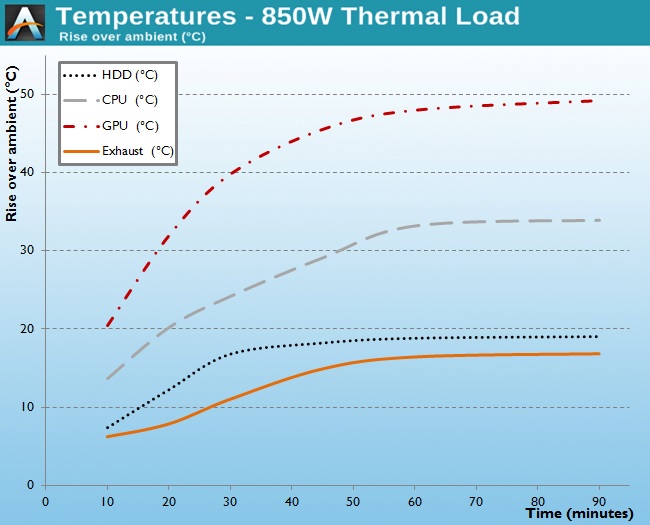
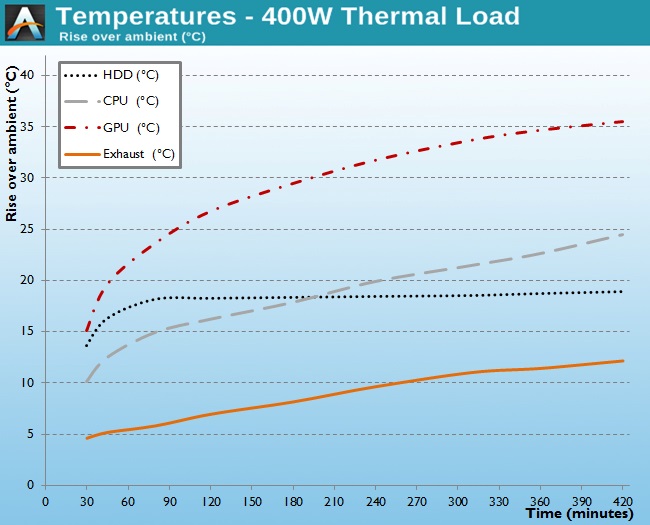
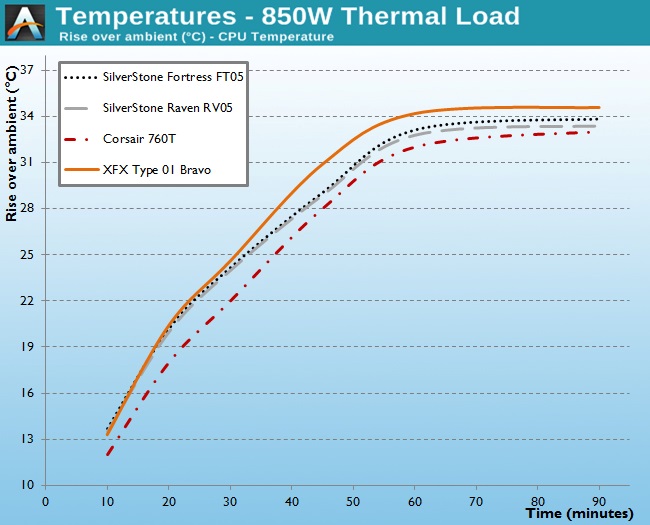
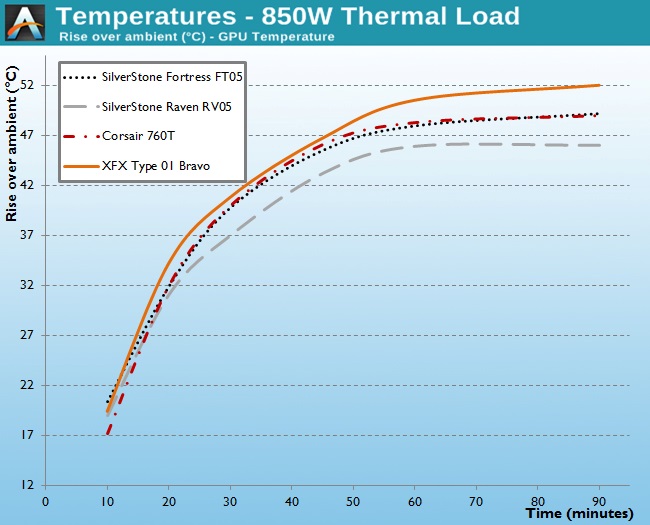
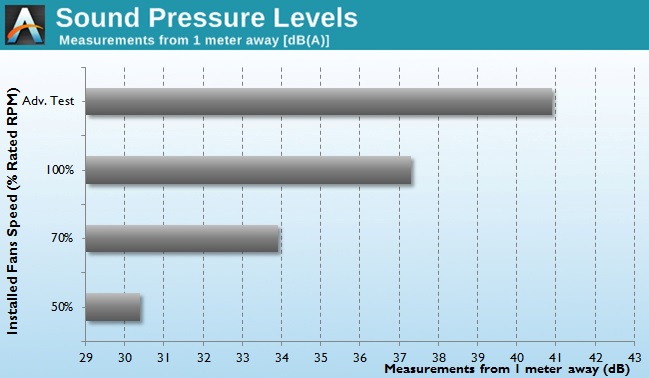








47 Comments
View All Comments
maximumGPU - Sunday, June 7, 2015 - link
Thx for sharing your experience with the case, helps others from opinions.curious to know why you had your fill with custom watercooling?
also,how would you rate silence operation of the air cooled ft05 and your previous watercooled setup?
MCX - Sunday, June 7, 2015 - link
Too much extra cost and time needed when upgrading stuff and when my pump broke I decided that it wasn't worth the extra effort. It's hard to make a direct comparison, it was a different case and different fans. I used 2x240 mm radiators to cool the cpu and gpu, and the cpu ran a bit hotter and the gpu a bit cooler under water in the single loop. than they do in air in the FT05. Noise-levels were about the same: Almost silent in normal operation.hasseb64 - Sunday, June 7, 2015 - link
Perfect case for me:-No DVD!
-Low numbers of 3,5"/2,5"
-Beautiful and Quiet
-Perfect thermal air flow
MASSAMKULABOX - Monday, June 8, 2015 - link
they make some nice cases but I lost interest when I saw the size. This thing is a room in itself. I tend to go micro-atx for power and m-itx for neatness.Sancus - Monday, June 8, 2015 - link
Why is test data no longer entered into the Bench database, and why is it presented without comparison to competitors?It's really not very useful in a vacuum, and manually comparing with other reviews is tedious. This is a major regression in the usefulness of case testing.
Dorek - Friday, June 12, 2015 - link
The answer is probably because they changed their testing methods so drastically (i.e., they don't actually run a computer inside of these cases anymore). Which I think is a mistake, but whatever.Dorek - Friday, June 12, 2015 - link
"e, a case mixing the rotated motherboard design of the Raven series with the classy solidness of the Fortress series."Solidity. The word is solidity.